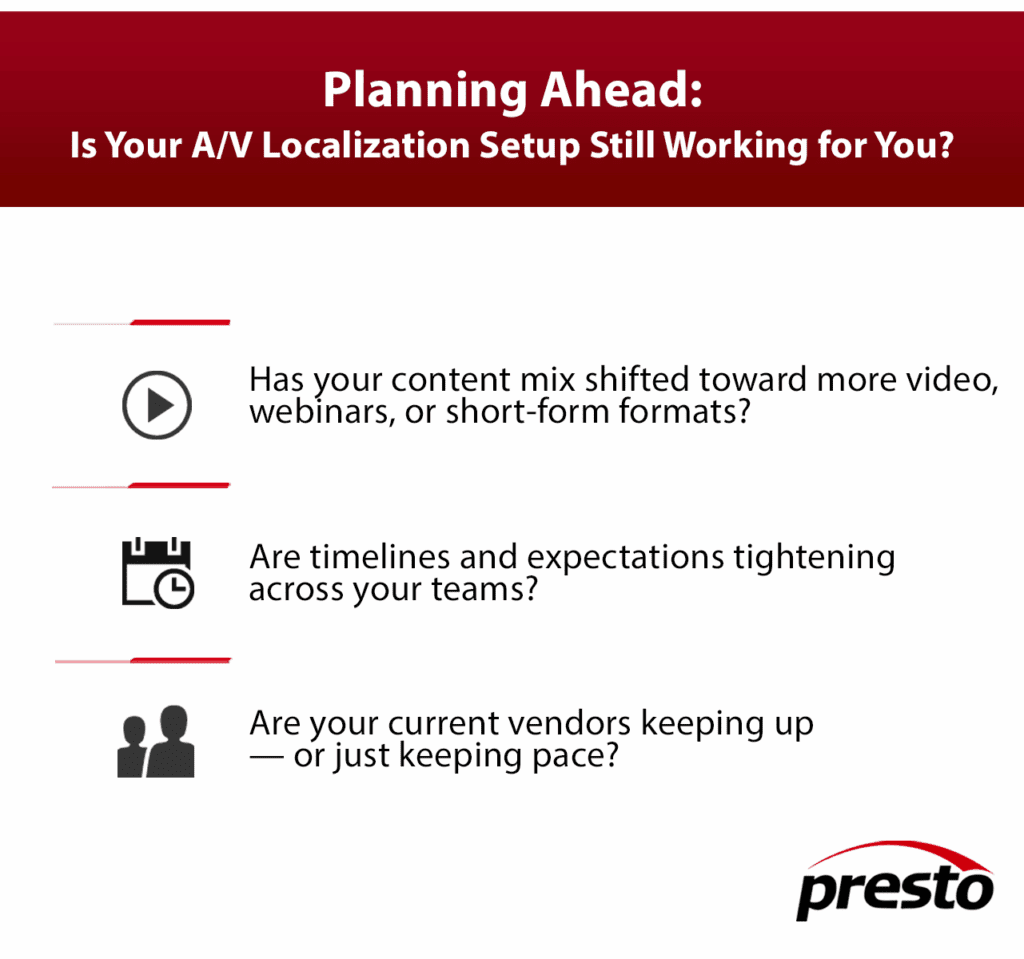The way businesses use video has changed dramatically. What used to be a handful of explainer videos or onboarding materials has grown into:
- Weekly webinars and live product demos
- Regionalized social content across multiple platforms
- Internal training in several languages
- On-demand client support videos
- Multilingual e-learning programs
And with that growth comes a new question: How do we localize all of this effectively, affordably, and on time?
What’s Shifting in the A/V Localization Landscape?
Here are some of the biggest shifts we’ve seen in the past 12 months:
- Shorter formats, tighter timelines
TikToks, reels, promo snippets. These formats are fast to create, and clients want them localized just as fast. That means turnaround is now just as important as accuracy. - Mixed workflows are becoming the norm
Clients are increasingly combining machine translation + human review, especially for subtitle-heavy content. But hybrid workflows only work when there’s clear structure and review built in and that’s something many teams learn the hard way. - One file ≠ one audience anymore
Clients are asking for multiple subtitle versions: one for public viewing, one for accessibility, one for internal compliance. That means video files need to be localization-ready from the start. - Freelancer burnout is real
Increased volume, tighter budgets, and per-minute payment models are creating fatigue in the supply chain, especially when raw inputs (like MT subtitles) require hours of fixing. It’s becoming harder to staff projects if expectations aren’t realistic.
What’s Still Working?
Despite these challenges, the core of successful A/V localization remains the same:
- Clear workflows
- Realistic timelines
- Smart use of automation (always with human oversight)
- Teams who understand both the language and the content format
At PRESTO, we help our clients adapt to changing demands without sacrificing quality or speed. Whether it’s scaling subtitle production, managing voiceovers, or simply making sense of your content priorities, we’re here to help.

Even if everything’s “working,” it might not be working as well as it could. Let’s talk about how to make your next multimedia rollout smoother, faster, and future-ready.
